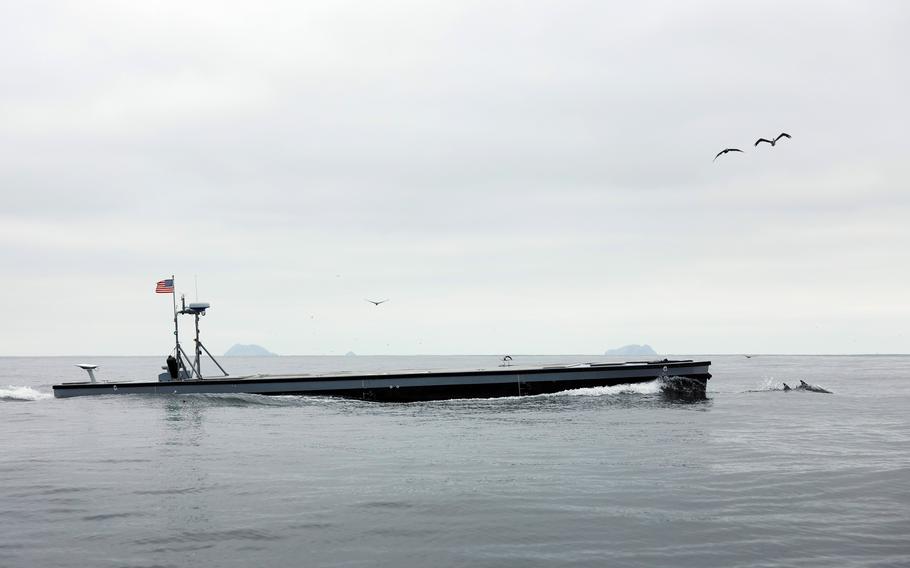Marine Corps
Marine Corps’ unmanned ‘narco-boat’ heads to Okinawa for Indo-Pacific trial
Stars and Stripes October 7, 2024

A Marine Corps Autonomous Low-Profile Vessel operates off the coast of Naval Base Point Loma, Calif., June 13, 2024. (Patrick King/U.S. Marine Corps)
CAMP FOSTER, Okinawa — The Marine Corps will soon deploy an unmanned, semisubmersible watercraft designed to move supplies and weapons across large ocean distances in waters surrounding Okinawa.
An Autonomous Low-Profile Vessel will arrive at Naha Port this month and operate “around the coastal waters of Okinawa” for about 11 months, Capt. Pawel Puczko, spokesman for the III Marine Expeditionary Force, wrote in an email Monday.
The vessel is part of “an ongoing modernization process,” he wrote.
Brig. Gen. Simon Doran, commander of the Marine Corps Warfighting Laboratory in Quantico, Va., at a conference Sept. 4 described the vessel as “just a narco-boat,” similar to low-profile boats used by drug runners in Central and South America.
The vessel is designed to resupply troops on contested islands in the Indo-Pacific, as part of the island-fighting doctrine described in the Marines’ Force Design plan.
“The ALPV is an autonomous logistics delivery system that can lighten the Marines’ physical load, provide supplies at the critical point of need, and transfer of various classes of supplies across vast distances in the maritime environment,” Puczko wrote. “This is one potential technology the Marine Corps can use to provide sustainment to Stand-in Forces operating within contested areas.”
Various III MEF units will use the vessel during its time on Okinawa, Puczko wrote. He declined to identify specifically where the vessel will be used and what cargo it will carry, citing security issues.
The vessel also will be used at Red Beach in Kin Town, White Beach Naval Facility and the west coast area of Ie Shima Auxiliary Airfield, a spokesman for the Okinawa Defense Bureau, an arm of Japan’s Ministry of Defense, said by phone Monday.
There are no plans to use the vessel to transport missiles or ammunition, a spokesman for the prefecture’s Military Base Affairs division said by phone Monday.
Some Japanese government officials are required to speak to the media only on condition of anonymity.
The drone vessel is semisubmersible and can carry resupply payloads of up to 5 tons with a range of 2,000 nautical miles, according to a March news release from the vessel’s designer, Leidos. The firm said it delivered two last year to the Marine Corps Warfighting Lab.
The Marines tested the vessel in February and March during the U.S. Army’s Project Convergence Capstone experimental exercise at Camp Pendleton, Calif., the release said.
“This is 55-feet long, completely autonomous,” Doran said at the Defense News conference in Arlington, Va. “It’s able to go hundreds or thousands of miles. It’s able to carry weapons systems that we have that are new; it can carry fuel, it can carry food, it can carry pretty much anything you want to put in it.”